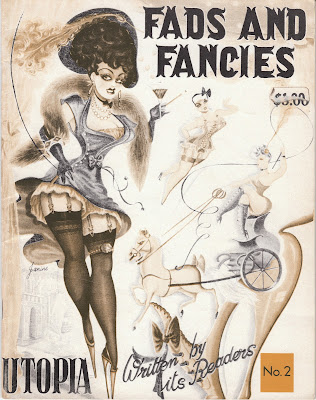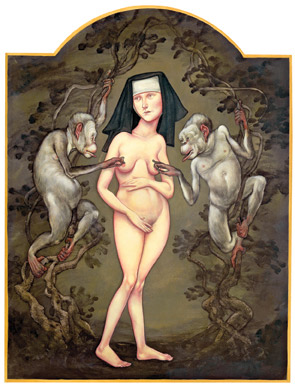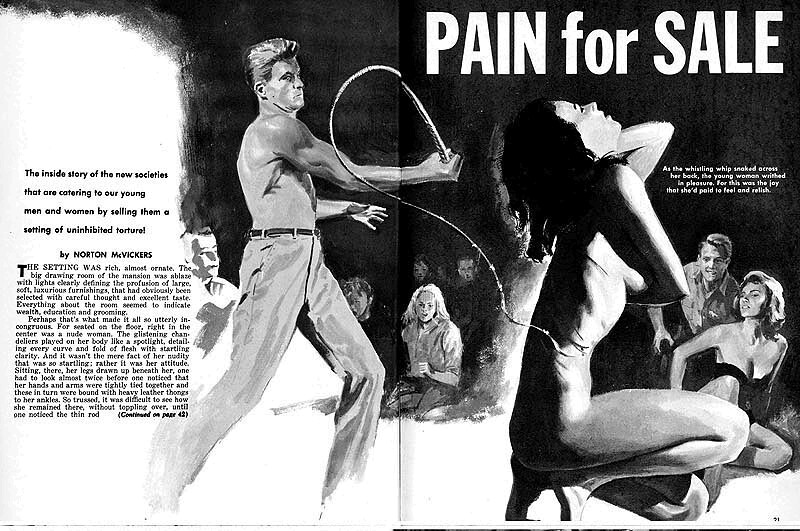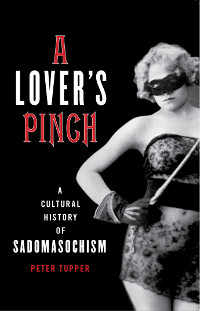The Vintage Sleaze blog has the story behind the Fads and Fancies fetish magazine, published in the late 1940s and early 1950s, and its signature artist known as Janine, actually a woman by the name of Reina Bull.

The astounding drawings by an anonymous artist known only as “Janine” who drew work for the sleazy Utopia magazine “Fads and Fancies” a British fetish magazine in the late 1940s and early 1950s. The work is no longer anonymous. It was done by a woman all right, but Janine wasn’t her real name. Fads and Fancies was published by Utopia, who printed fetish material remarkably similar to Nutrix and Irving Klaw, and at roughly the same time.
[…]
Janine had an incredible, unique, eccentric and curious style likely developed to cater to the audience. Particular parts of the plump participants protrude depending on the proclivities she wished to portray. Which is an alliterated way of saying big boobs and big butts. Kinky and unreal, but then certainly enticing to the readers who must have been “big” fans (pun intended.) To the rest of us, they look hilarious…Dolly Parton on Steroids! The work takes an “all-purpose” approach to fetishists. The artist can not figure out if she is titillating a shoe fetish, a butt fetish, a fat fetish, a breast fetish, a stocking fetish…if the idea of a fetish is to focus on one particular object, there was something kinky for all in Janine’s curious drawings. At the time, the fetish underground was not yet defined, but the publishers knew if they appealed to a handful of eccentricities, they would reach a market.
Fads belongs in a tradition of English fetish magazines that includes Photo Bits and London Life, and goes back at least to the 1870s when the Englishwoman’s Domestic Magazine took a turn for the pervy. The business model seems to be, “give the punters what they want”.
Nowadays, Rule 34 is in full effect and every fetish has its own Tumblr.





